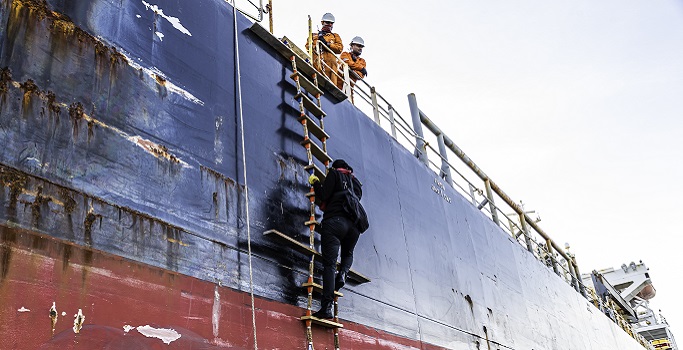
Transnet National Ports Authority
Services: Ship Repair
Ship Repair Projects
TNPA’s numerous ship repair projects under Operation Phakisa, are in full swing at ports around the country.
What is a Dry Dock?
A dry-dock is a narrow basin that can be flooded to allow a load to be floated in. Pumps then drain the dock to allow the load to come to rest on a dry platform. Dry-docks are used for construction, maintenance and repair of ships, boats and other watercraft. This definition is applicable to all docks found in South Africa. The Durban graving dock consists of two caissons for inner and outer docking of vessels.
The provision of graving docks in South Africa was dictated by conditions arising out of the First World War which ended in 1918. Ship repair facilities were developed along the South African coastline with Durban and East London along the east coast and Cape Town along the west coast.
To date no new docks have been built since the last one was built in East London in early 1944.
There is abundant literature on shipbuilding and ship repair. Both activities take place in South African ports with ship building mainly in Durban. Ship repair firms utilise the facility to repair their vessels.
Why do Ships Use the Dockyard?
There are a number of reasons:
Statutory requirements dictate that the hull integrity be periodically assessed,
Hull repairs in the case of collapsed tanks, and
Who undertakes the repairs?
The facilities are owned and operated by TNPA, but the actual repairs are performed by private ship repair companies.
Repairers are accredited by TNPA in its landlord capacity. Docking dues are borne by the vessel owner.
What services are offered by TNPA’s ship repair facilities?
The ship repair business has two components being the Dry-dock and the Engineering Workshop. The latter is mainly used to manufacture spares and equipment for TNPA’s own tug fleet. Dredgers also visit the dock for scheduled maintenance.
The graving dock supplies vessels with provisions for ballast, cooling system, fresh water and craneage for their repairs. The crane capacity includes 50 tons, 24 tons and 8 tons.
How do vessel owners choose where and when to dock their vessels?
Convenience and costs are the main drivers that determine where and when to dock a vessel.
Under normal circumstances vessels do not deviate too much from their trade routes to do repairs, unless the price and time make economic sense. South African ports are strategically positioned for vessels plying their trade via the Indian and Atlantic Oceans.
What are some of the challenges facing TNPA's Ship Repair Unit?
It must be borne in mind that originally the docks were conceptualised to support repairs to damaged vessels during World Wars. In designing the facilities available at South African ports, the railways, which operated and controlled all harbours, also considered the economic benefits envisaged from agriculture, mining, industry and commerce and made provision for future progress. An example of their foresight is that pumps commissioned in 1924 are still operated in Durban today!
Under Operation Phakisa Transnet boasts a host of engineering projects aimed at modernising facilities to meet current demands. However, with the new generation of vessels in the market, the existing dock configurations are a limiting factor. It is therefore not surprising that bigger docks are being considered at Richards Bay and Saldanha, where gas and oil exploration along the west coast offers a huge opportunity for rig repairs.
Another challenge is that the current model of owning the infrastructure with repairs done by private companies does not benefit TNPA, as the maintenance and revenue costs are out of balance. Under consideration, is the possibility of concessioning the whole business. Meeting the Government's aspirations in terms of job creation and skills development is also a challenge. Training is used to develop the necessary skills. We also consider equity and gender issues when recruiting and filling positions.
What skills are offered by the business?
Each port has a ship repair leadership team consisting of dock masters and technical managers, supported by trade hands.
The business is staffed with both skilled and unskilled labour. Typical trades in the dock yard include shipwrights, blacksmiths, millwrights, electricians, ship surveyors, divers, turners, boilermakers, and welders.
What projects are being undertaken?
Major projects being undertaken include:
Electrical Cable reeling system on cranes,
Lifting equipment upgrade,
PLC upgrades and installation on cranes,
Marine services (engine overhauls),
Dredging services (repair drag head, bow pipe and ship side valves), and
Fleet maintenance (marine vessels for propeller and rudder repairs).
and Finally...
South African ship repair facilities are committed to providing services conforming to recognised best practices, regulatory rules and standards.
The Quality Management System promotes effective and efficient running of our facilities consistent with our customer requirements. All employees are expected to be familiar with procedures and policies consistent with Transnet’s aspirations.
All employees are expected to be familiar with procedures and policies consistent with Transnet's aspirations.
South African ports are ready to serve the ships and shipping!